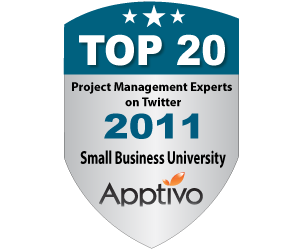Many high-growth organizations find themselves outgrowing
their existing project management practice and tools. With a growing portfolio,
project information becomes more and more scattered pushing the capacity of
resources beyond their limits. The project management leader inherits the
responsibility of project delivery without the appropriate tools in place to
deliver the desired results demanded from their stakeholders. So, these
organizations arrive at a fork in the road and are faced with the decision to
either scaling back their project intake to align with their current capabilities
or change their approach by adopting an Enterprise Project Management (EPM)
system.
For project-centric organizations looking to incorporate an
EPM strategy in their practice, it is recommended to adopt an approach in which
the organization as a whole is plugged into the improved ways of tracking,
accessing and sharing project information. EPM takes a holistic approach to
managing all projects with great consideration given to their impact on the
people, processes and corporate objectives. The idea is to develop a project
management environment where projects are treated as a group of interrelated
goals that are linked to a single group of people with finite availability and
talent.
EPM focuses on a single project’s success within the context
of other competing projects and resources, which means the focus on successful
scheduling, planning, execution and delivery must consider the success of all
projects impacting an organization. At the core of EPM, project-centric
organizations need to implement a holistic approach of managing projects within
the context of all the activities performed. So, a successful EPM strategy
includes enterprise wide buy-in, inclusive processes and a far reaching EPM
platform to deliver the 360 degree view across the organizations. The goal of EPM
should be to transform your project management practice into a formalized
process with a well-defined framework and best practices guidelines.
Many organizations are too late in discovering they are
ready for EPM. Like many businesses, initially project management is a means to
an end to either deliver what was sold to customers or to deliver the
infrastructure to keep up with a growing business. In a typical reactive mode,
those “running” the projects realize that they cannot keep up with the pace and
are faced with the reality that a change to their processes need to mature in
order to deliver the quality results that customers demand. Although recognizing their growth and taking
this first step toward a more mature practice, technology is only one piece of
the EPM puzzle.
In order to take a more proactive approach to streamlining
your project management practice, consider a EPM
Readiness checklist, according to The Project Management Hut:
- Does your organization have a growing portfolio of projects impacting the bottom line?
Do not wait until your project pipeline becomes
unmanageable. If you are in a high growth industry where projects are central
to your success, you should incorporate an EPM strategy earlier.
- Does your project pipeline exceed the abilities of your current resources?
The moment your pipeline of projects is approaching your
capacity of resources and EPM strategy needs to be considered. People are the
cornerstone to successful projects and preparing your EPM resource plan before
it becomes an issue can avoid future losses.
- Do you leverage any industry best practices?
Getting ready for EPM means you need to build a project
management best practices approach to delivering projects. Formalizing your
approach builds the ideal culture for the success of EPM in the organization.
- Do you have a formal process in place?
Establishing a formal process builds the structure to
support an EPM strategy. A framework should engage the whole organization so
that the holistic philosophy of EPM is setup for success.
- Are your existing tools falling short?
The best indicator you need to look at EPM solutions is when
your existing tools lag in delivering the information to hit project timelines
and manage your distribution of work among resources.
- Do you have executive buy-in for change?
With the introduction of any new EPM process or technology
the change management question cannot be ignored. Including a change management
component from the top down can mean the difference between the success and failure
of EPM.











No comments:
Post a Comment